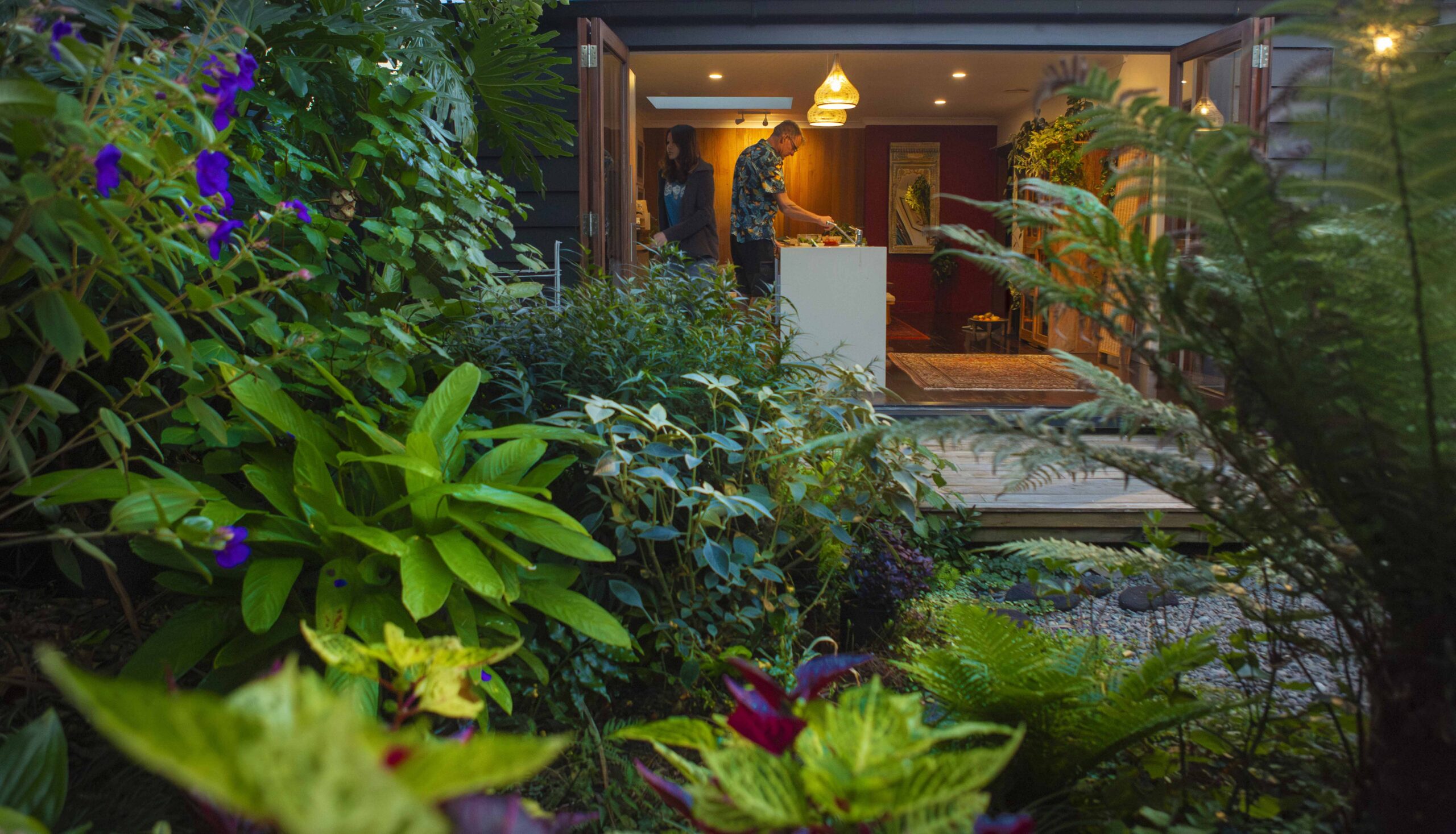Words Robyn Welsh, Photography Maureen Tan
Sometimes the magic element that lifts a garden and its home to extraordinary heights is hiding in plain sight.
In Maureen Tan and Stephan Peters’ immersive, resort-style garden, there are secrets to be discovered everywhere. Deep in the thick of their sub-tropical tapestry of colour and texture, there is no discernible back boundary, no hard edges enroute from front to back.
There is nothing to jar your eye wherever it falls. Unless you peer under a leaf, that is. And it’s only then that you’ll see soil.

This is the magic that Stephan Peters, an IT project manager, and Maureen Tan, who is qualified in graphic design, photography and horticulture, have worked into their 340sqm Ponsonby oasis that is just 2kms from Auckland’s bustling city centre.
Amid the towering palms, fruiting trees, colourful sub-tropical foliage and delicate ground covers, there is more. Two homes blur the boundaries of time – their original 1920s street side kauri bungalow and, almost a century later, their 2019 secluded bamboo tiny house at the end of the driveway.
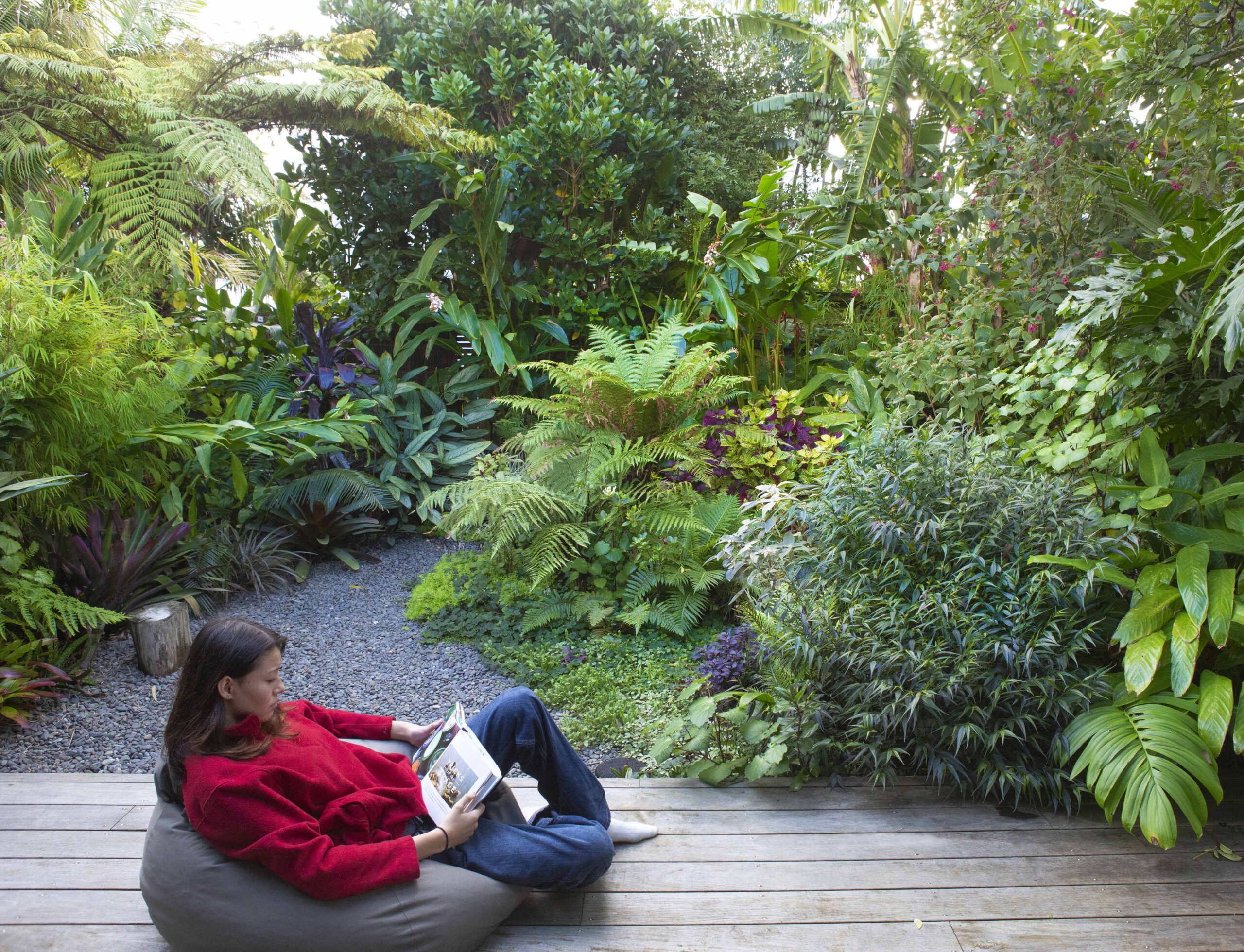
Their twice-renovated bungalow is Stephan and Maureen’s home with their daughter Amaya, aged 15. Just prior to their Covid-interrupted 2020 European OE, they completed their tiny house on the 15sqm footprint of the former single garage.
Back then, the adjoining patio was their vegetable garden. Their rear, elevated hot tub is hidden behind palms, Monstera and large staghorns above steps and retaining walls built from gifted, surplus volcanic rock. At eye level, tiny vibrant epiphytes tucked into wall-mounted ponga logs are yet another living wall up here.
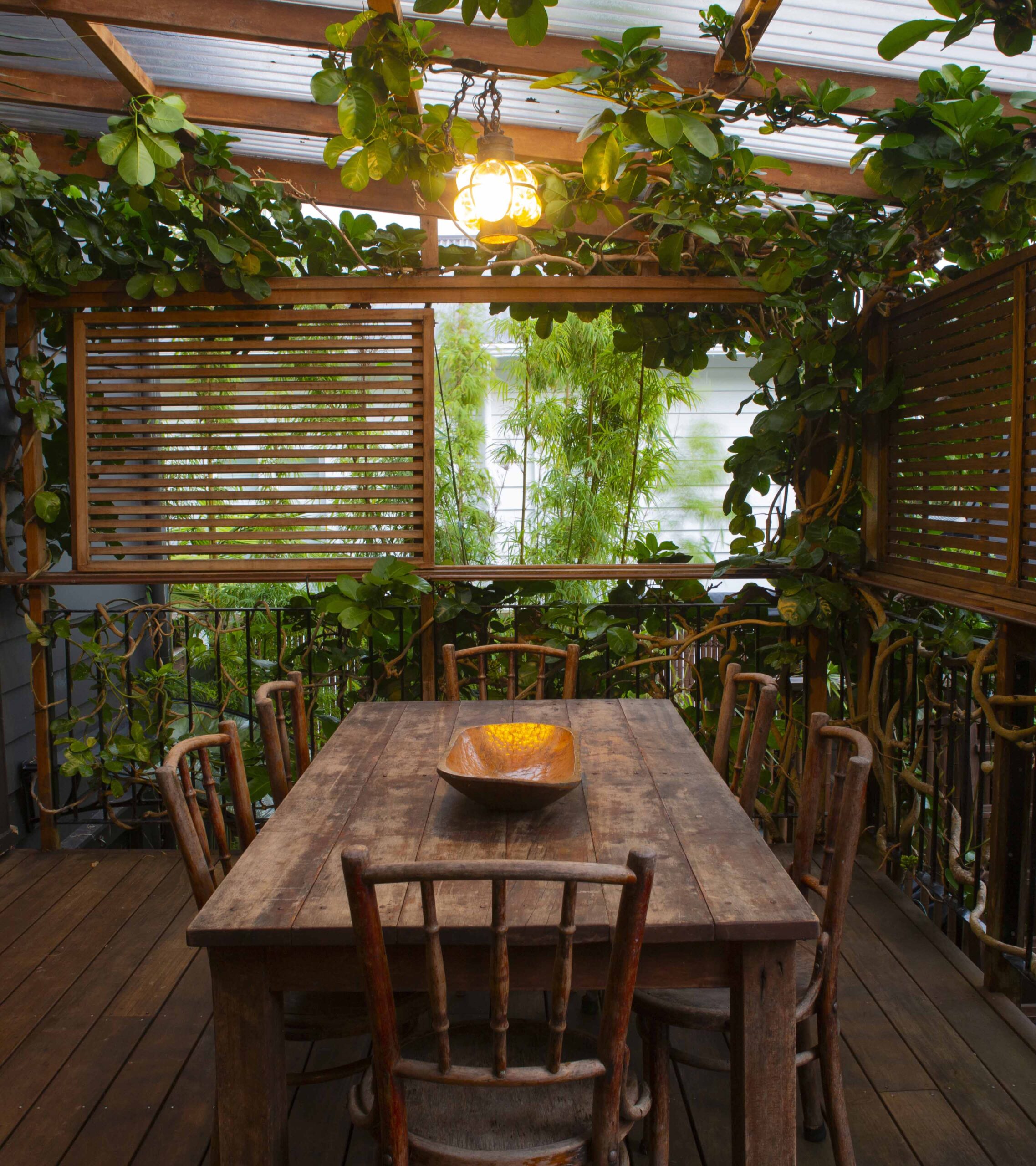
Both Stephan and Maureen, who met in 1999, are multi-talented visionaries. Stephan built a scale model of the tiny house they designed, for the plans which were drafted by Macfie Architecure, Auckland.
“Stephan is the practical one, I’m more aesthetic,” says Maureen. “He plants the big stuff. I plant the understories.” Stephan adds, “I’m practical. Maureen is more creative. What follows is what comes out in the middle.”
Stephan bought this property with his sister around seven years before he met Maureen. His second renovation here saw Stephan and Maureen weather a winter with the back of the house under tarpaulin while they dug out the basement to create downstairs living. As per their newly discovered non-negotiable commitment to sustainability, they reworked old kwila decking into a horizontal feature wall in the new stairwell.
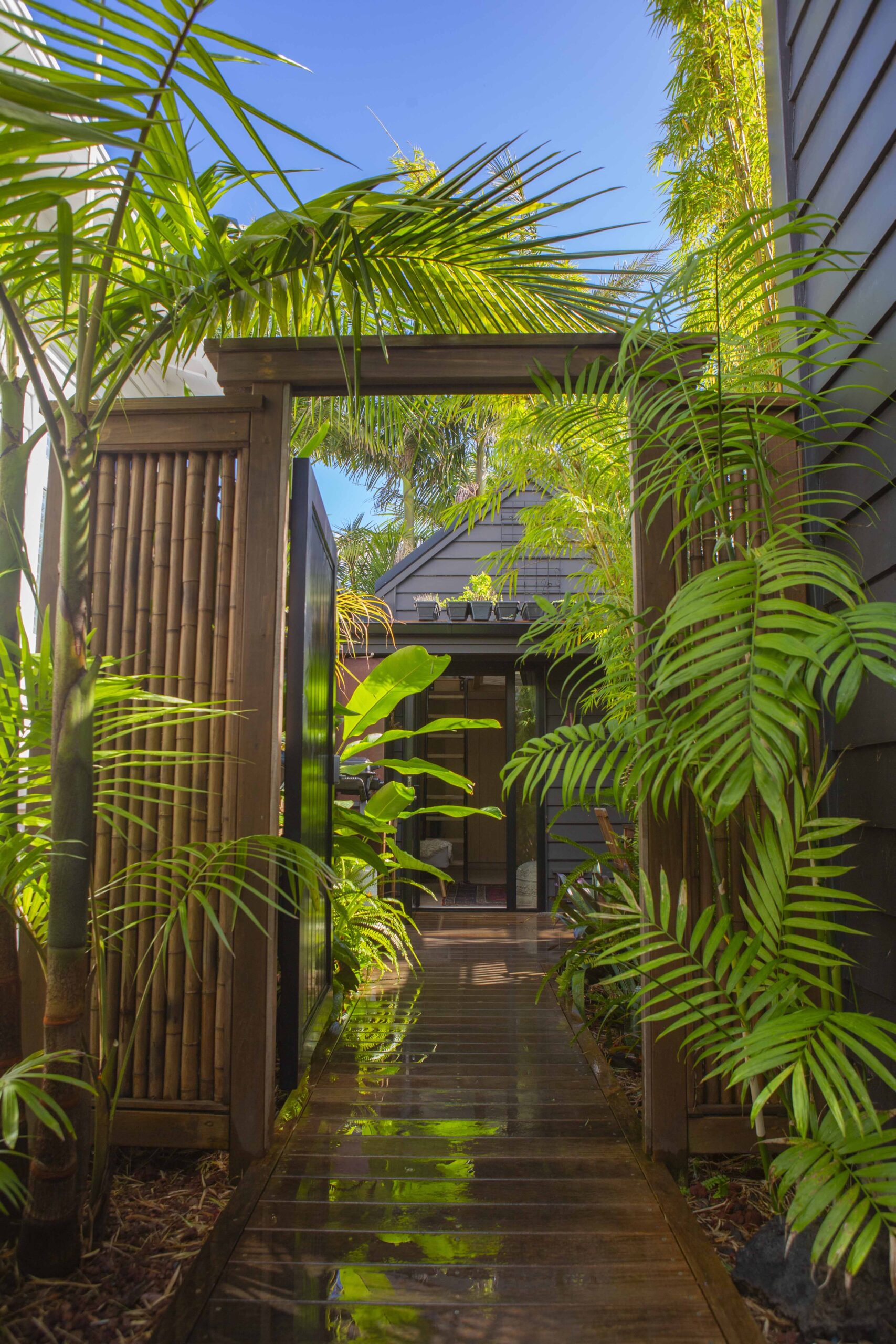
Sustainability is at the forefront of the tiny house with its bamboo panelling, open tread stairs and built in cabinetry in the mezzanine chill-out zone and the downstairs kitchen/living and bathroom. Outside Stephan worked with locally harvested bamboo as well as imported bamboo panels to customise textural screens for privacy and a cohesive visual connection.
Everything here is about recycling, re-homing and repurposing resources. Capturing nature’s bounty is achieved with roof-top solar panels for electricity and 2,000 litres of rainwater storage for irrigation and the hot tub.

Stephan grows their herbs and greens in planters on the porch roof of their tiny house, moving them down when they’re ready to harvest and pick a platter for dinner. Maureen often collects unwanted plants from her clients’ gardens and gives them a new life here. Surplus plants are donated to charity shops for sale, along with her propagations.
In their main house, their conservatory-style, dining deck has climbing walls of native Tecomanthe speciosa through the wrought iron balustrades and around the bamboo screens. She planted one plant on each side of the outside stairs. “We’ve trained them,” says Maureen, who cuts up strips of old bike tyre inner tubes to secure the branches. “We wanted privacy and we wanted it quickly.”

Their deck opens directly out to Maureen’s circular Zen garden. Smooth pebbles replace the high-maintenance lawn that didn’t quite work here. Ground cover edging merges with still more multi-layered foliage, with Stephan’s prolific Misi Luki banana palm and ornamentals creating a living screen.
Maureen adores the randomness of her garden where every shade of Mother Nature’s green palette co-exists harmoniously. “Nobody walks through the forest and says, ‘Oh, this doesn’t go with that.’ Nobody ever says that,” she says. “Here every space evokes a different feeling for me, being enveloped in nature is like an escape from the mundane. The Japanese call it forest bathing, but here it’s on a smaller scale in this garden.”
Pesticides and herbicides are nowhere to be seen here. Instead Maureen’s dense planting and mulching suppresses weeds, retains soil moisture, adds nourishment and contributes to the biodiversity that includes plentiful insects and birdlife.
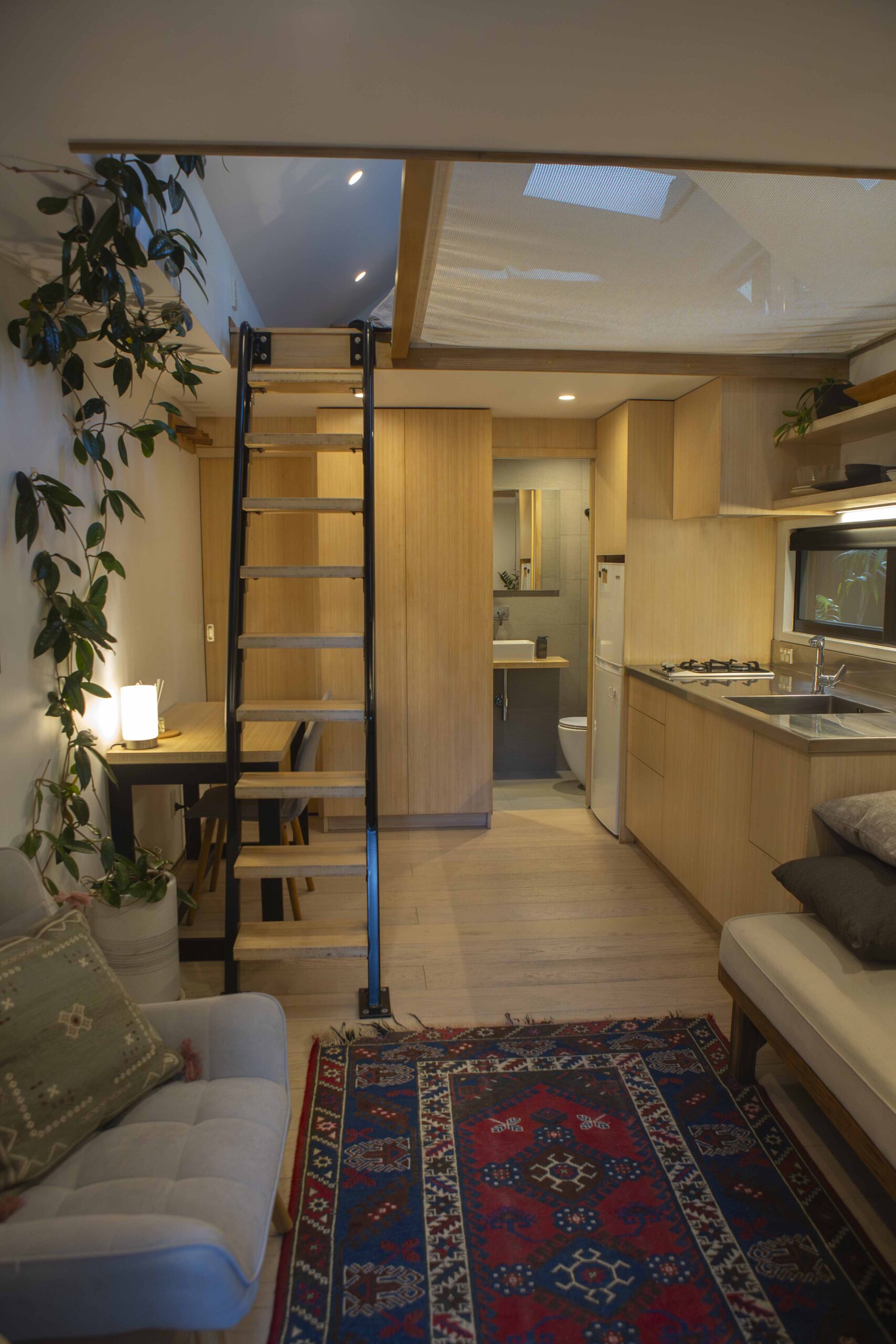
She talks about the evolution of gardens and seeds travelling in bird poop and the wind and flourishing where they fall if conditions are right. “I didn’t want to plan a garden to be the same forever because nothing is forever.” A gap in a garden doesn’t irk her either. “I don’t like uniformity. There’s always room for a cutting. Just poke it in somewhere and see what happens.”
Maureen is on botanical name terms with her countless plant varieties that include Arum, Marantaceae, Heliconiaceae, the bromeliad and ginger families and New Zealand natives. Their 50-year-old potted Hoya Carnosa is a sentimental favourite from Stephan’s father, climbing up through the tiny stairwell.
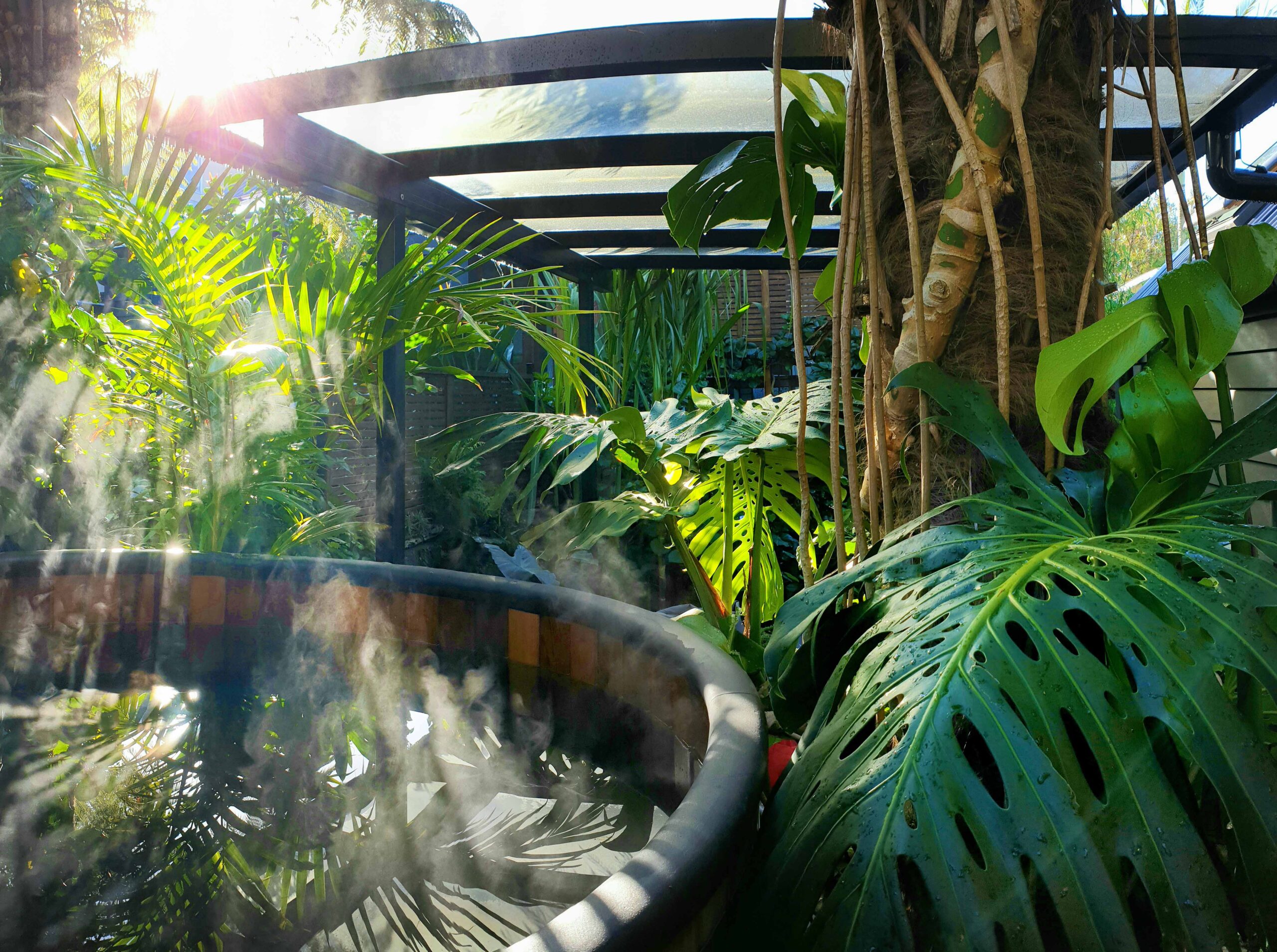
Even the plants the rest of us call weeds have their place. Maureen points to a creeper spilling out of a gap in a rock wall. “Why would you pull it out? Sure it’s a weed but I love weeds and this little one is softening the edges. Why would you want to see a hard edge here?” she says.
“If I landscaped this place leaving all the boundaries visible, you’d see how big the ground is and how close the neighbours are. This house is just your standard three-bedroom house like everything else in the street. It just looks much bigger because of all the different spaces so you don’t see it as one big picture. But when you can’t see the boundaries, your eyes are invited to explore the layers of the garden to discover the non-existent ends.”


